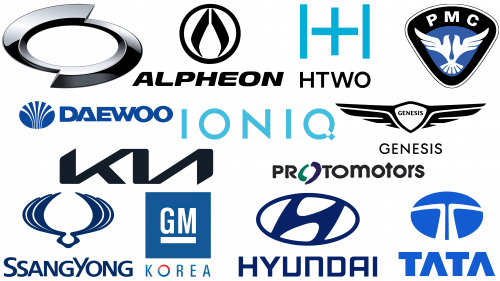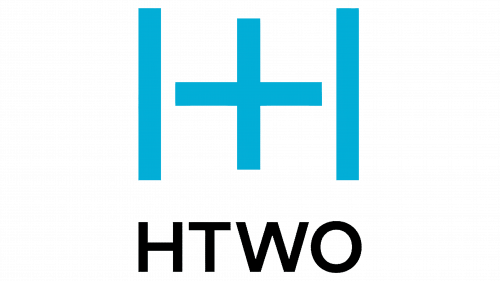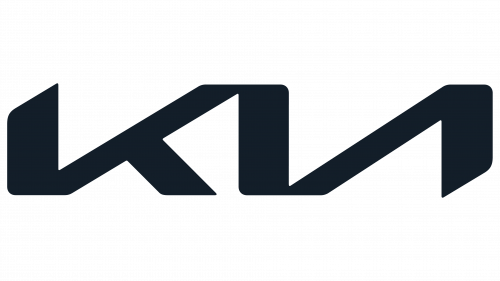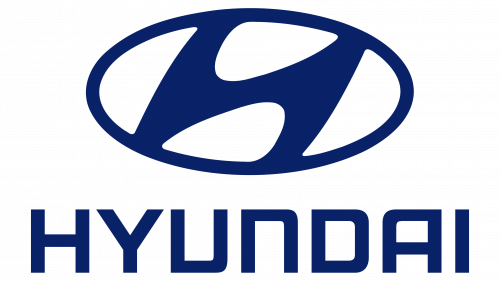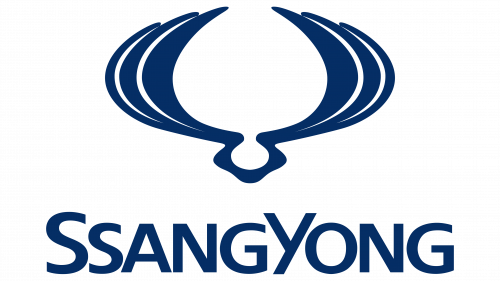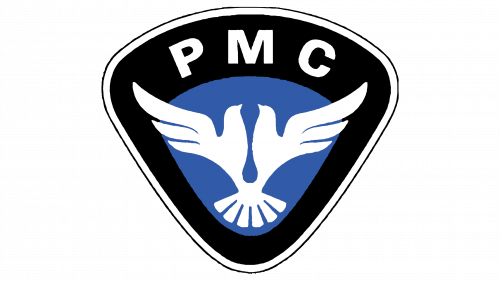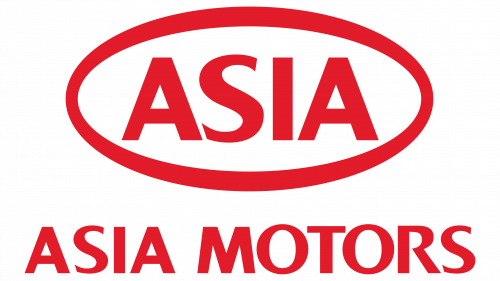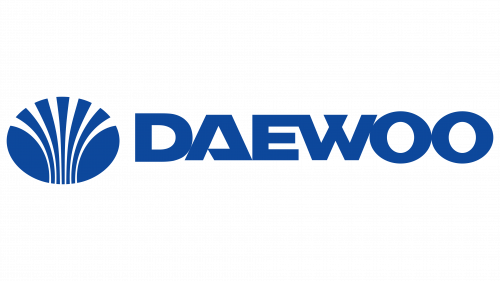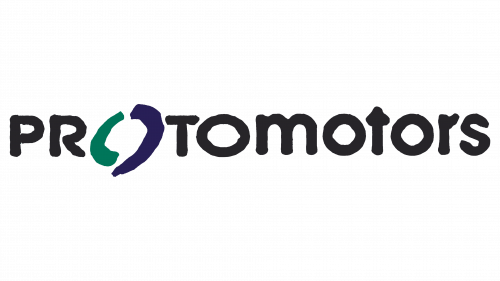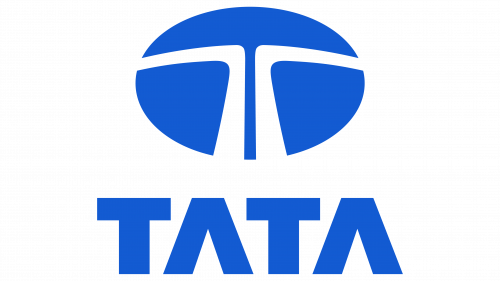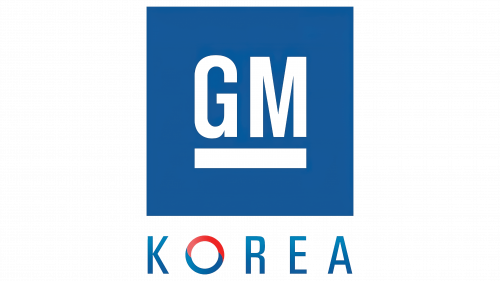The automotive sector boasts numerous influential players, and among them, several Korean automakers stand out prominently, recognized by their distinctive emblems. Much like leading global entities, these Korean automotive firms utilize their unique badges as symbols to captivate potential clientele and foster brand allegiance.
Over the decades, emblems from certain Korean automakers have achieved such remarkable recognition that they are now identified beyond their homeland, reaching shores as distant as the United States and many other influential markets. A notable example is the widespread recognition of the Hyundai emblem.
The focus will be on delving deeper into the emblems, branding strategies, and captivating tales behind these esteemed Korean automotive corporations, understanding the elements that render them unforgettable in the global market.
What cars are made in Korea?
Korea’s automotive sector is vast and diverse, encompassing a wide range of vehicles, from expensive luxury cars to affordable mass-market options for different budgets. One of the most striking differences in this area is the differentiation by region of origin, i.e., whether a particular car is from North or South Korea.
South Korean automakers make a significant contribution to the global automotive industry thanks to their extensive product portfolio. Brands such as Kia Motors, Hyundai, and Renault Samsung Motors have carved out a niche for themselves, gaining international exposure and catering to the diverse needs of consumers around the world.
North Korea presents a more limited range of automotive offerings. Pyeonghwa is one of the few North Korean brands that has gained an international presence since its introduction in 1998. This demonstrates that North Korea continues to operate in the automotive world in a more constrained environment.
Korea has witnessed the rise and fall of several automotive brands. This is evidenced by companies such as Proto Motors, Sibal, and Shinjin Motors. Once active in the development of the Korean auto industry, these companies have ceased operations, but their legacies remain, adding to the rich tapestry of Korean automotive history.
How many Korean car brands are there?
Against the backdrop of the huge global automobile market, Korea’s automotive sector may seem more compact. Despite its size, it boasts strong automotive rivals, with key players such as Hyundai and Kia Motors leading the way.
Despite the domestic market being dominated by brands such as Hyundai and Kia Motors, the Korean automobile market has proved receptive to imported cars, which has enriched the choices available to Korean consumers. The inclusion of imported cars allows for a wider range of options, catering to the diverse preferences of the local population.
Among the cars that grace Korean roads, brands such as Kia and Hyundai often dominate. According to statistics, by 2022, the Hyundai Porter held 5.2% of the total market share and was the best-selling car in the country. It is followed by the Kia Bongo with 4.2% of the market share.
Which is the best Korean car brand?
As in any other global market, determining the “main” brand of a Korean car is subjective and largely depends on individual preferences and requirements. The ideal choice invariably depends on specific needs and desired features.
With all the variety of options, Kia and Hyundai have undoubtedly secured their positions as leading and widely loved brands. Their consistent performance and reputation have earned them a wide clientele spanning a variety of demographics.
If one delves deeper into the study of Korean cars, one will find some famous emblems and names that were introduced by these brands. These emblems and names have also played a key role in the perceptions and aspirations of global car enthusiasts.
Unique and luxury car brands from Korea
The Korean automotive sector is diverse and includes a variety of vehicles that cater to a wide range of preferences and needs. These range from ultra-modern luxury models characterized by elegance and sophistication to modern mass-market cars that combine functionality and style.
Looking at the luxury segment, Korea offers a range of high-end vehicles that prioritize comfort, innovative technology, and superior design aesthetics. These cars are often equipped with the latest technological advancements, luxurious interiors, and powerful engines, making them a top choice for those who appreciate luxury and sophistication in their driving experience.
Several brands in the Korean market specialize in luxury cars, showcasing models that seamlessly blend traditional craftsmanship and modern innovation. These high-end cars reflect the epitome of technological advancement in the automobile industry and are indicative of the aspiring lifestyle of discerning buyers.
Genesis
Genesis Motor LLC, commonly referred to as Genesis, is an upscale division of Hyundai and holds a significant market share in the Korean automotive sector. Originating in 2004 as an ambitious plan to produce a luxury sedan under the Genesis name, Genesis did not become an independent company until more than a decade later, in 2015. The launch of the Genesis G90 marked the company’s debut as a standalone brand, solidifying its position in the high-end car market.
Rooted in Korean heritage, Genesis has an international presence. It has manufacturing facilities under its control in many countries, including Germany, South Korea, and the United States. In 2021, the brand received numerous awards, including being recognized as the most reliable and technologically innovative brand in North America.
Genesis uses a distinctive logo depicting a shield-shaped center framed by outstretched wings. This design embodies the concepts of freedom and strength that are highly valued in luxury car design.
Ioniq
The Ioniq is a relatively new innovation in the South Korean automotive sector, produced by a subsidiary of Hyundai. This car was originally conceived as a compact sports hatchback under the Hyundai brand and was equipped with a battery-powered electric drivetrain alongside a traditional gasoline engine.
In 2020, the brand made its official debut with an ambitious goal: to popularize electric vehicles among the South Korean population. With plans to put millions of electric vehicles on the roads, Ioniq has pioneered the transition to eco-friendly mobility in the region.
The Ioniq logo is fully in line with the modern and progressive spirit of the brand. The bright blue lettering not only stands out but also subtly hints at the color blue, which is commonly associated with electrical energy. This is complemented by a sleek sans-serif font, giving the brand a creative and forward-thinking aura.
Ioniq’s focus on electric vehicles and strategic branding elements make it a significant player in automotive innovation.
HTWO
Emerging in the automotive sector, HTWO, a prominent subsidiary of Hyundai Motor Group, marks South Korea’s ambitious step towards hydrogen-powered transportation. The arrival of this brand at sunset 2020 marks a new dawn in the evolution of eco-friendly mobility solutions. According to Hyundai, this fledgling venture is set to play a key role in the production of hydrogen-powered vehicles that are expected to become benchmarks on the global stage.
The intriguing choice of the name “HTWO” is not just a quirky decision. At a fundamental level, it echoes “H2”, the elemental designation for the hydrogen molecule, which is a direct reference to the brand’s core technology. The name “HTWO” is emblematic, embodying two principles: “Hydrogen,” representing the company’s technological foundation, and “Humanity,” indicating a broader commitment to societal well-being and sustainable progress.
The GWS emblem demonstrates a design ethic embodied in a modern aesthetic. The brand name is rendered in a vibrant sans-serif font and exudes modern sophistication. The text element is accompanied by a clear plus sign flanked by parallel lines. These graphic elements are more than just a design choice.
Mass-market car brands from Korea
In the automotive industry, South Korea has consistently occupied a significant position, especially in the production of mass-market vehicles. This Asian country has established a strong position by producing vehicles that not only meet domestic demand but are also globally recognized. The emergence and global success of automotive titans such as Kia Motors and Hyundai attest to its supremacy in this field.
These companies have carved a niche for themselves in the highly competitive automotive industry by setting standards through innovative designs, advanced technology, and customer-oriented service. Hyundai, for example, has become a household name over the years, synonymous with reliability and advanced technology. Similarly, Kia Motors, offering a diverse lineup of vehicles, targets different audiences by offering luxury and economy models that cater to a variety of consumer preferences.
South Korea’s automotive industry, which includes giants such as Hyundai and Kia Motors, is a testament to its industrial vigor and ability to innovate and adapt in an ever-evolving global marketplace.
Kia Motors
South Korea’s Kia Corporation, commonly referred to as “Kia,” has firmly established its place in the global automotive sector since its founding in 1944. A testament to its prowess is the fact that it is the second largest car manufacturer in the country, second only to the famous Hyundai. Notably, the two giants have an uneasy relationship: while Hyundai owns about 33.88% of Kia’s shares, the latter holds stakes in about 20 of Hyundai’s subsidiaries.
Originating from South Korea, Kia has tapped vast international markets, producing vehicles for various segments. The brand’s diverse lineup offers solutions for many driver requirements and preferences – from compact city cars to spacious family sedans.
Although the emblem has changed over the decades, the current emblem stands out for its sleek, modern aesthetic. The name “Kia” is presented in uppercase, with the letters artistically converging to form a distinct geometric pattern. In addition to symbolizing automotive excellence, the emblem also reflects South Korea’s design sense and forward-thinking ethos.
Kia’s journey from humble beginnings to becoming a global automotive powerhouse emphasizes its commitment to innovation, quality, and understanding of the changing needs of motorists around the world.
Hyundai
Originating from South Korea, Hyundai has cemented its position as one of the most recognized automotive brands around the world. With its roots firmly planted in Korea, the brand’s widespread recognition is a testament to its commitment to quality and innovation. Hyundai Motor Company is a critical component of the vast Hyundai Motor Group, which includes other respected brands such as Genesis Motor.
The brand’s global presence is astounding, with its vehicles sold in 193 countries around the world. Over the years, Hyundai has earned a reputation for producing versatile, mass-market vehicles that satisfy a wide variety of consumer needs. The history of Hyundai begins in 1947 when Chang Ju-young introduced the company to the world. The Cortina was the brand’s first entry into the automobile market and marked the beginning of an era.
The emblem combines simplicity and sophistication. The choice of blue as the primary color embodies the feelings of reliability and dependability. The brand name accompanying the emblem is executed in large serif and capital letters, which gives confidence and authority.
A distinctive feature of the emblem of Hyundai is the stylized letter “H,” which, at a closer look, appears slightly slanted. This choice of design is not accidental; it subtly embodies the values and principles of Hyundai.
SsangYong Motor
Founded in South Korea, SsangYong Motor Company traces its history back to 1954. The company mainly specializes in the development and production of sport utility vehicles (SUVs), targeting a segment of consumers for whom performance and roominess are important. In response to changing consumer preferences and environmental concerns, the company has recently begun to refocus on the development of electric vehicles.
The story behind the creation of SsangYong is intriguing: the company emerged from the merger of two separate firms, Dongbang Motor Company and Ha Dong-hwan Motor Workshop. This merger gave SsangYong a wide range of opportunities, allowing it to diversify its product range over time. In addition to SUVs, the company produces Jeeps designed for the U.S. military, as well as a line of commercial vehicles, including buses and trucks.
The SsangYong Motor Company logo is attractive and notable. The diamond-shaped body encloses a bird with gracefully curved wings. The larger, underlined letters of the word mark add a special flavor to the corporate identity, subtly emphasizing the unique features of the brand. SsangYong Motor Company is a strong player in the automotive market, combining long-standing heritage and progressive innovation.
Pyeonghwa
With its roots in North Korea, Pyeonghwa Motors may not be as world-renowned as some of its South Korean counterparts, but it has a significant presence in its region. On the international stage, the company has carved out a niche for itself as a rare beacon of the North Korean automotive industry.
Pyeonghwa Motors began its journey in the automotive industry in 1998, and its establishment has an interesting historical context. For a brief period, ownership of the company was split between North and South Korea. The main focus of the company’s production is compact cars and vans targeting specific market segments.
Pyeonghwa’s emblem is a combination of symbolism and simplicity. At the top of the inverted curved triangle is the name of the brand in Korean. The centerpiece of the emblem is two doves sitting opposite each other. This may be a symbolic reference to the union of the North and South, reinforcing the theme of “peace” inherent in the company’s name and ethos.
Renault Samsung Motors
Founded in 1995, Renault Korea Motors, also known as Renault Samsung Motors, is a prominent player in the South Korean automotive market. Its creation was facilitated by Nissan, which emerged at an important period in economic history shortly before the East Asian financial crisis. This period was turbulent for many companies, but Renault Korea Motors managed to weather the storm and gain a strong foothold in the automotive sector.
In 2022, Renault’s parent company, Renault Korea Motors, entered into an agreement with Geely, another well-known member of the automotive industry. The aim of this strategic alliance is to produce vehicles based on the Compact Modular Architecture platform, specifically designed for domestic consumption. Production under this agreement is scheduled to start in 2024, which will be another important milestone for the brand.
Renault Korea Motors’ logo is inextricably linked to its dual identity as part of the Samsung and Renault conglomerate. While many logos in the Korean automotive market are often overloaded with text, Renault Samsung Motors takes a minimalist approach. The emblem is a slanted oval divided into two halves converging in the center. The absence of text allows the design to convey its message on its own. The converging halves symbolize the unity of Renault and Samsung, two different entities coming together as one.
Defunct car brands from Korea
Korea’s automotive sector has been characterized by several brands over the years. Yet, it’s enlightening to journey into the past for a deeper appreciation of branding nuances, particularly regarding logos and imagery. The annals of Korean automotive history reveal several brands that once held prominence but eventually faded away. These brands resonate with enthusiasts who harbor an appreciation for vintage automobiles.
A comprehensive delve into the past presents not just vehicles but also the stories they represented. The logos of these bygone brands were meticulously crafted, encapsulating a blend of the brand’s essence and the era’s prevailing design philosophy. These were not mere symbols; they bore testament to the dynamic interplay between automotive innovation and cultural influences.
While today’s Korean automotive market might seem concentrated, the shadows of the past suggest a tapestry of innovation, competition, and creativity. Each defunct brand, with its distinct identity, had its moment under the sun, contributing to the rich tapestry of Korea’s automotive heritage.
Alpheon
The often-forgotten Alpheon brand originated from South Korea and was a venture of the Korean division of General Motors. Between 2010 and 2015, Alpheon specialized in producing a localized version of the Buick LaCrosse aimed exclusively at the South Korean market. The brand was aimed at the upper middle class but failed to achieve significant success in the market as initially expected.
The brand’s nomenclature is a combination of the Greek letter “Alpha” and the term “Aeon,” symbolizing eternity. The logo is a metal ring with two graceful curved lines intersecting in the center. The finishing touch is the brand name “Alpheon,” tastefully inscribed around the perimeter of the ring, while the spacing between the letters adds an element of modern aesthetics.
Alpheon is a South Korean automobile brand backed by General Motors and targeting the domestic upper-middle-class market. Despite a well-crafted image and terminology, the brand failed to gain significant market share and ceased operations in 2015.
Asia motors
Under the name Asia Motors, Asia Motors Industries began operations in 1965 and ended operations in 1999. From 1976 until its closure, the company was part of the Kia Motors conglomerate.
Asia Motors was well known for its wide range of vehicles designed for various industries. From rugged and reliable military vehicles to buses for public transportation and trucks for industrial use, all of these vehicles gained a reputation for durability and efficiency. In the 1970s, an interesting collaboration occurred when Asia Motors teamed up with Fiat. This collaboration led to the production of models resembling the Fiat 124. In the following years, the company went into the production of heavy and sporty SUVs, expanding its range to large and medium-duty trucks.
The emblem of Asia Motors was chosen to be simple and bright. It was a red oval, in the center of which, in bold capital letters, was written “ASIA.” To clarify the brand identity, the full name – “Asia Motors Industries” – was elegantly placed at the base of the emblem.
Daewoo
Daewoo, which has become a well-known South Korean car manufacturer, has carved out a niche for itself in the global market. The nomenclature of the brand is an intriguing combination: from the word “Dae,” which means “Great” in Korean, and from the nickname of the founder and chairman of the board of directors – Kim Woo Chong.
Daewoo Group did not limit itself to the production of automobiles but expanded its horizons, becoming a colossal conglomerate in South Korea, which has existed for more than 55 years. The versatility of the group’s activities is evident: it comprises about 20 different divisions, each operating autonomously but under the Daewoo umbrella.
The emblem, which is often mistaken for a flower composition, is actually a stylized image of a seashell. Inside the shell is the brand name “Daewoo,” typed in bold font with capital letters sans-serif. The choice of a dark blue shade for the logo was not just aesthetic but symbolic, designed to convey the notion of reliability and trustworthiness.
Daewoo Motors, a subsidiary of the Daewoo Group, has attracted attention for its diverse range of mass-market-oriented vehicles. Despite the fact that in 2011, the production of Daewoo cars was discontinued, its emblem has remained in the memory of many.
Proto Motors
Originating from South Korea, Proto Motors became a renowned sports car manufacturer in 1997 and ventured into the production of various bus models for the regional market. The company has sought cooperation by forging noteworthy alliances with industry giants such as GM Daewoo, Kia Motors, and Hyundai Motor Company.
Among the vast number of vehicles created by Proto Motors, the Spirra model is a prime representative of the brand’s prowess. This sports car, which debuted at the 4th Seoul Motor Show, has attracted the attention of car enthusiasts and industry experts alike. But Proto Motors’ innovations didn’t end there. The company took a unique approach by producing cars from scratch and remodeling existing designs. This inventive strategy has resulted in convertibles, electric cars, and even a one-of-a-kind convertible limousine – the perfect combination of luxury and novelty.
Proto Motors opted for simplicity and clarity. The logo was uncomplicated, highlighting the company name in bold sans-serif font. The brand name was capitalized, increasing its visibility. There was a subtle but intriguing twist to the design: the first letter “O” in the word “Proto” was not just a circle but was artistically depicted as two gracefully intertwined curves.
Other vehicle manufacturers from Korea
Within South Korea’s automotive sector, the emphasis is on developing a small but robust set of manufacturers rather than a wide range of brands. Unlike many parts of the world, where the automotive sector is rife with a multitude of brands, South Korea has taken a more focused approach. This has allowed the country to invest heavily in a few brands, turning them into industry leaders with far-reaching global influence.
Going beyond catering to the local market, these manufacturers have demonstrated their versatility by entering and succeeding in various international arenas. Through strategic partnerships, mergers, and collaborations, some of these brands have achieved synergies and growth that has made them formidable competitors in the global arena. Their cars, characterized by advanced technology and great design, resonate with international audiences and experts alike.
At first glance, the number of automobile brands in South Korea may seem limited. However, a deeper look reveals that quality is more important than quantity, and each brand is carefully designed to meet high-quality standards.
Tata Daewoo
Tata Daewoo Commercial Vehicle Company, a notable subsidiary of global giant Tata Motors, has its origin in South Korea. This company is the second-largest commercial vehicle manufacturer in the country and has firmly carved a niche for itself in the local automotive sector.
Having started its operations in 2002, Tata Daewoo did not immediately attract the attention of international conglomerates. In 2003, it was incorporated into the Tata Motors family. Although Tata Daewoo’s core business is the manufacture of trucks and cars, its influence extends far beyond serving local businesses. Even if its name is not on the lips of some parts of the world, in South Korea, its presence is undeniable.
The Tata Daewoo logo reflects the brand’s personality and stands out with a dark blue hue that is synonymous with reliability and confidence. The centerpiece of the design is a symbolic blue circle intercepted by two white lines. These lines converge in the center, resembling the letter “T” or perhaps symbolizing two roads meeting at a crossroads. The design symbolizes the Tata Group affiliation and the brand’s ethos of travel-oriented ethos in the automotive industry.
GM Korea
GM Korea, firmly embedded in the vast structure of General Motors, has a significant place in the South Korean automobile market as its third largest manufacturer. The creation of GM Korea was influenced by the legacy of the Daewoo Motors brand, which was spun off from the parent company in 2001.
With an extensive product portfolio, GM Korea is not limited to producing vehicles exclusively for the domestic market. Emphasizing its depth in the automotive sector, GM Korea boasts a number of state-of-the-art facilities located throughout Korea. These design, engineering, research, and development centers play a key role in the creation of many automotive solutions, most notably compact cars.
GM Korea’s emblem indicates its affiliation with its parent company, General Motors. On the blue square background of the emblem, symbolizing steadfastness, white underlined initials “GM.” Beneath these initials, the word “Korea” is inscribed in brightly colored script in an artful style, giving the global symbol a touch of local identity.
Famous car companies from Korea
South Korea may not boast an extensive list of automotive brands in the automotive industry. However, that hasn’t stopped the existing brands from leaving an indelible mark on the global stage. A limited number of automobile brands hailing from this country have nevertheless caught the attention of the world, earning praise and admiration in equal measure.
It is a testament to their prowess that some South Korean automobile giants such as Kia Motors and Hyundai have successfully expanded beyond the borders of their country and gained a strong presence and reputation in international markets.
North Korea’s automotive industry presents a very different picture. The economic challenges faced by the region have hampered the development of its automotive industry. The financial difficulties faced by most of the country’s citizens make owning a car a distant dream, even though efforts are being made to produce the most fuel-efficient cars possible.
